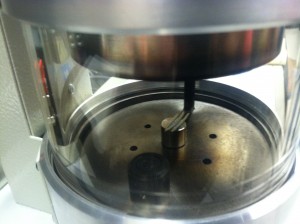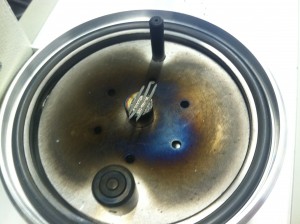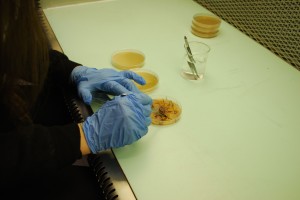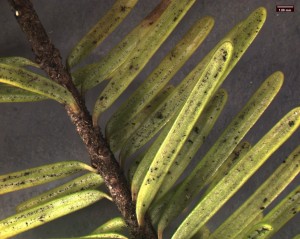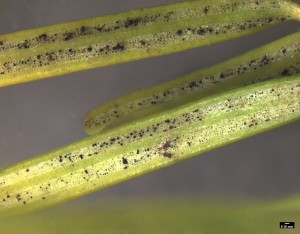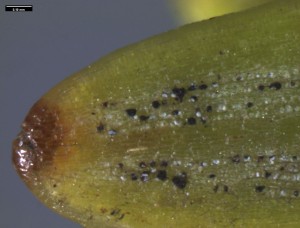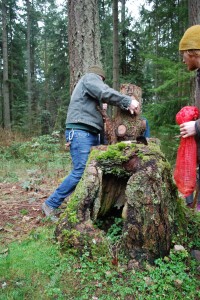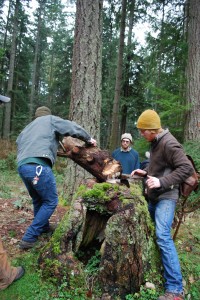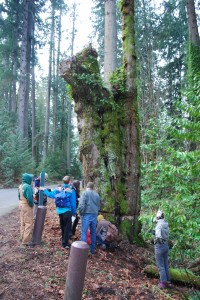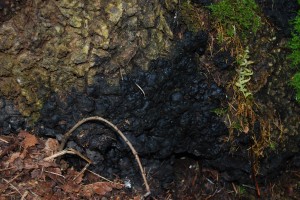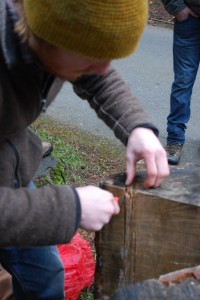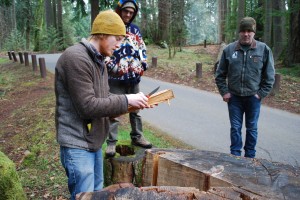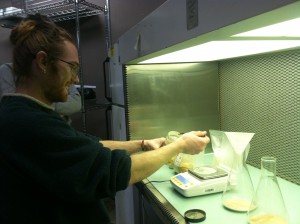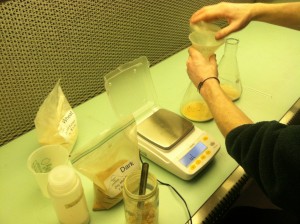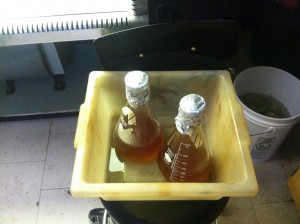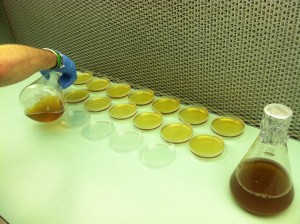We prepped our Swiss Needle Cast infected Douglas Fir needles today for the SEM. Have a look!
Latest
Globalization, Climate Change, & an Increase in Pathogenic Forest Fungi
Globalization means that many human diseases such as H1N1, SARS, ebola and other killer diseases can travel swiftly with ease around the globe, infecting new human populations. However, the rapid pace of globalization not only affects us humans, but impacts forest ecosystems the world over as well. The quick passage of people and goods across the globe has also dramatically increased the mobility of fungi, parasites, and viruses. Hitching rides like vagabond bums, they cling to the agricultural produce in freight trains, hide within nursery stock in the back of landscaping trucks and sleep in timber in the back of logging trucks. They’ll catch a ride with any unsuspecting traveler who unknowingly picks them up on the bottom of their shoes, clothing, or in tools that the timber industry uses in the field. Goods that are being traded all over the world are smuggling pathogens along with them all across their trade routes! Globalization is challenging native species with unique and exotic species combinations that have never before existed, and unfortunately in this species vs. species battle, pathogens seem to have the upper-hand over the trees every time. Fungi are able to grow swiftly, and reproduce multiple generations within a matter of weeks whereas trees by contrast take years to reach maturity, let alone reproduce, which severely curtails their ability to adapt to new stresses from exotic pathogens they’ve never had to deal with before. In addition, native pathogens that are already prevalent may have the upper-hand in scenarios of increased stress, such as long-term climate change.
Climate change also plays a significant role in this fight, usually favoring the fungi and other pathogens. There is evidence that increased warming enhances pathogen fruiting periods. The accelerating climate changes, coupled with stressful monocrop style forestry practices, puts considerable strain on trees which then have a much higher susceptibility to pathogen attacks. Shifts in a forests climate, precipitation, pH levels, etc. can alter tree physiology and compromise the trees natural resistance to pathogenic invaders. This is complicated by the decline of our forests, which are being swallowed by modern development. This effectively makes the forest an island at sea, with its tiny shores being easily pillaged by newcomers, delighting in the spoils of an unsuspecting ecosystem. This threat of colonization of our forests by invasive species is not restricted to pathogenic fungi but also plants and insects that can associate with fungal pathogens, acting as the main source where the plague can spread from.
This brutal cocktail of a rapidly changing climate mixed with teeming multitudes of advantageous fungi means that many Northwestern forests will have to face dramatic shifts in species compositions in the coming decades. Larger, older hardwoods can be expected to get pushed out by shrubs and more well adapted, less vulnerable species of trees. For now, it seems, the best chance that trees have is the increased human interest and research into fungi and pathogens by scientists committed to understanding the various diseases that affect our forests.
Priest Point Pathogens
We met up with Tom Otto and Ira Davis, arborists for the City of Olympia, and they showed us the pathogens in Priest Point Park. Here are some pictures of our experience:
Tom ousting the middle of the remains of a Phaeolus schweinitzii casualty. This tree was a Douglas fir when it was still alive, the cubicle rot of the wood is characteristic of the rot caused by this species.
This big leaf maple had to be cut because of a rot occurring at the base. The neighboring maple had a similar rot and fell in the middle of the parking lot; luckily no one was hurt! They cut this tree down before the Hypoxilon rotted it enough to completely fall over at an unpredictable time.
Here is a picture of the culprit, Hypoxilon.
Here is a great example of Phellinus sulfarescens (formely P. wereii). Isaac cut the rot out, and we will curate this into our pathogen teaching collection.
